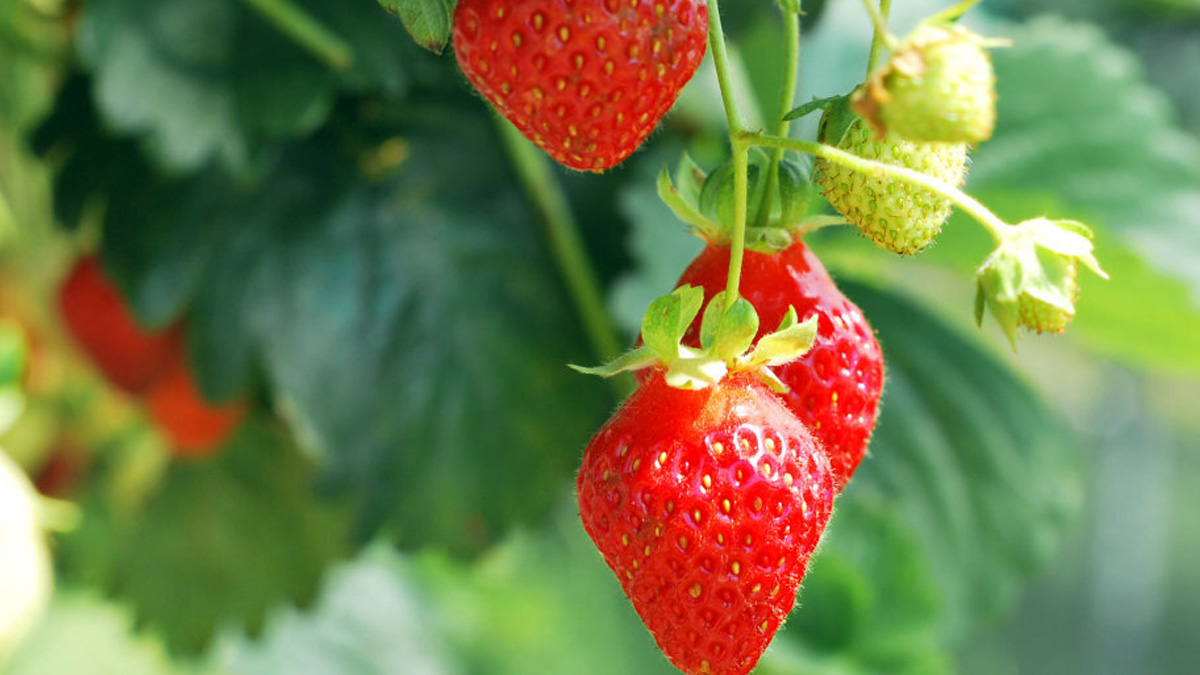How to Grow Juicy Strawberries in a Hanging Basket

Hanging baskets aren’t just for flowers they’re also perfect for growing sweet, sun-kissed strawberries. Whether you’re working with a small patio, a sunny balcony, or simply want to free up ground space, this method offers beauty and harvest in one. With the right setup and a few smart growing tips, you can enjoy juicy strawberries right outside your door.
Choose the right strawberry variety
Not all strawberries are suited for hanging baskets, so variety selection makes a big difference. Everbearing and day-neutral types are the best choices because they produce fruit throughout the season in small, manageable flushes. Varieties like Albion, Seascape, and Tristar are especially popular for containers due to their compact growth and reliable yields.
June-bearing types are less ideal since they produce all their fruit at once and then send out long runners. These runners take up space and energy that could otherwise go into fruit production. For hanging baskets, you want plants that stay productive and tidy over a longer period.
Pick the perfect basket
A sturdy basket with good drainage is essential for healthy strawberry plants. Baskets made from wire with coco liners are a classic option, but plastic or fabric grow bags can also work well. The container should be at least 12 inches wide and deep to give the roots enough space to develop.
Make sure there are enough drainage holes to prevent water from pooling at the bottom. If the basket retains too much moisture, it can quickly lead to root rot. You can also try tiered hanging planters if you’re looking to grow more plants in a vertical space.
Select high-quality potting mix
Strawberries in containers need a potting mix that is light, rich, and drains well. Avoid using garden soil, which is too heavy and often carries pests or diseases. A commercial mix formulated for vegetables or herbs is usually a safe choice.
Adding compost can help improve nutrient content and structure. Some gardeners also mix in perlite or coconut coir to improve airflow around the roots. Good soil sets the stage for healthy plants and sweeter fruit.
Planting your strawberries the right way
When planting, space your strawberry starts about six inches apart to give them room to grow without crowding. Most baskets will comfortably hold three to five plants depending on their size. Make sure the crown of each plant sits just above the soil line to prevent rot.
You can also tuck in trailing herbs like thyme or nasturtiums along the edge. These companion plants help shade the soil and may even deter certain pests. Plus, they add a decorative touch to your hanging basket.
Give them the sunlight they crave
Strawberries need plenty of sun to develop juicy, flavorful fruit. Aim for a location that receives at least six hours of sunlight per day, though more is even better. South-facing walls, balconies, or porch railings are often great options.
Since baskets are portable, you can move them if one spot isn’t sunny enough. Keep an eye on shifting shadows as the season changes. If needed, rotate the basket every few days to ensure even exposure on all sides.
Keep moisture and feeding consistent
Strawberries in hanging baskets dry out faster than those in the ground, so regular watering is essential. Check the soil daily, especially during warm or windy weather. If the top inch of soil feels dry, it’s time to water.
Be careful not to overdo it. Soggy soil can suffocate the roots and promote fungal issues. Fertilize every two to three weeks with a balanced, water-soluble fertilizer or use a slow-release formula at planting time.
Train and trim for better fruit
In small spaces, it’s best to remove runners so the plant focuses its energy on producing berries. Simply snip them off when they appear. This helps keep the plant compact and prevents it from outgrowing the basket too quickly.
When plants are young, you might want to pinch off the first few flowers. This encourages stronger root development and better fruiting later in the season. Light trimming throughout the season helps maintain airflow and appearance.
Protect your harvest
Birds and insects may be tempted by ripening fruit, but hanging baskets can give you an edge. Placing baskets near a window or doorway deters some pests due to foot traffic. Lightweight netting can also protect the fruit without blocking too much sun.
Slugs are less of a problem in hanging setups, but aphids and spider mites can still appear. A quick spray with water or a natural insecticidal soap usually does the trick. Inspect plants regularly so you can catch any issues early.
Harvesting and enjoying your strawberries
Pick strawberries when they are fully red and slightly soft to the touch. They don’t continue to ripen after picking, so wait until they’re ready. Morning is the best time to harvest, when the berries are cool and firm.
Check your plants daily during peak season to avoid missing ripe fruit. Regular picking encourages the plant to produce more berries. Enjoy them fresh, add them to salads, or use them in desserts—the flavor is hard to beat when they’re homegrown.
Conclusion
Growing strawberries in hanging baskets is an easy and rewarding way to enjoy fresh fruit at home. With the right variety, consistent care, and a sunny spot, your plants can thrive all season long. A little planning goes a long way in creating a space-saving setup that produces delicious results.
